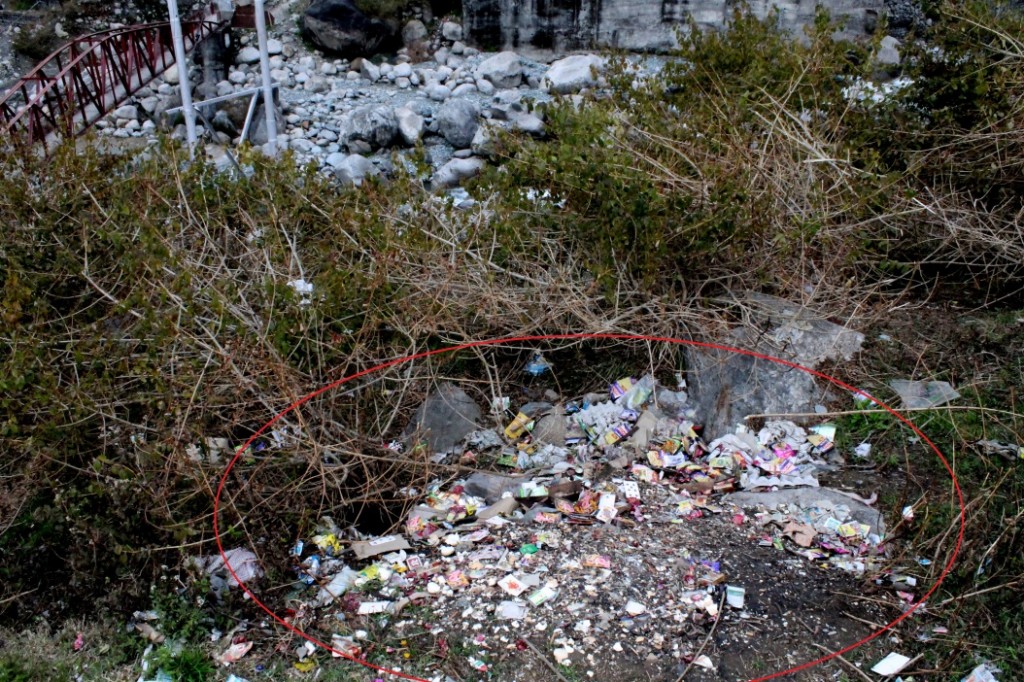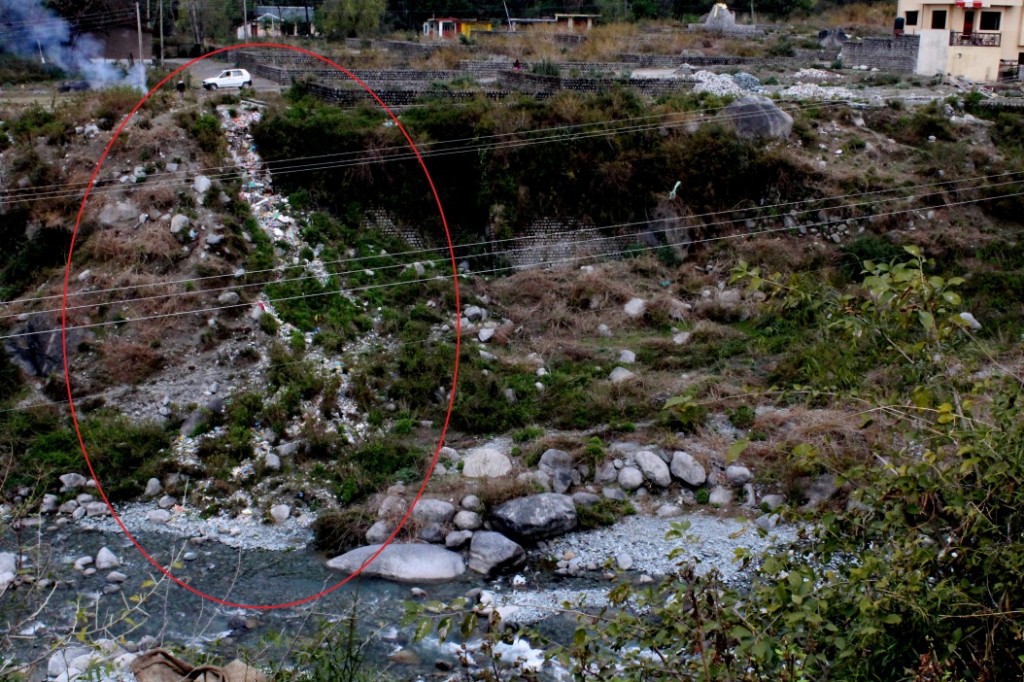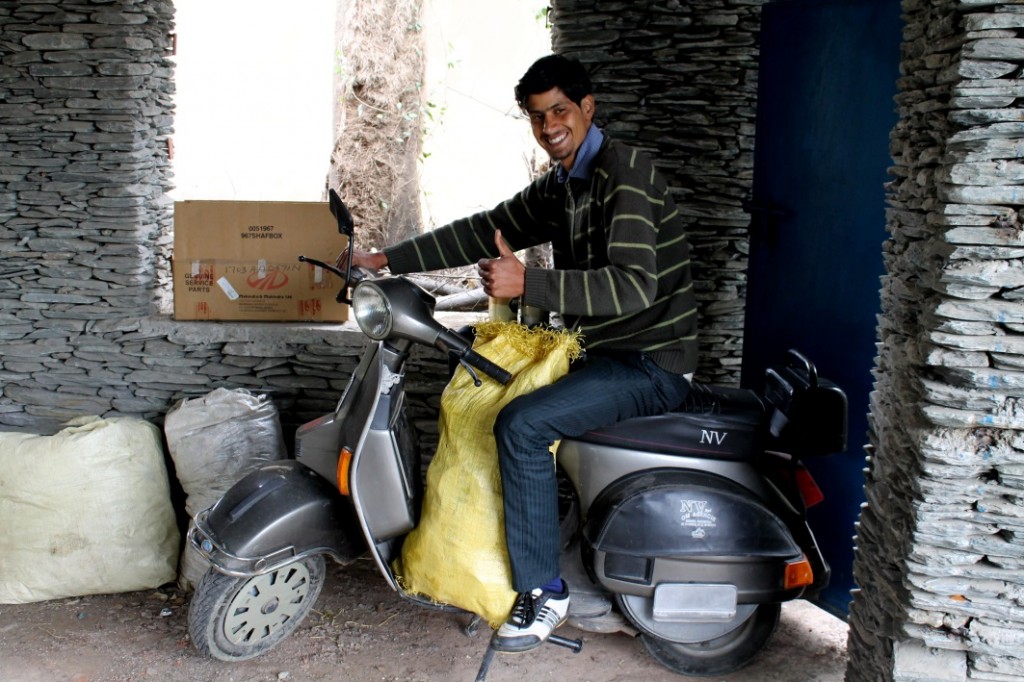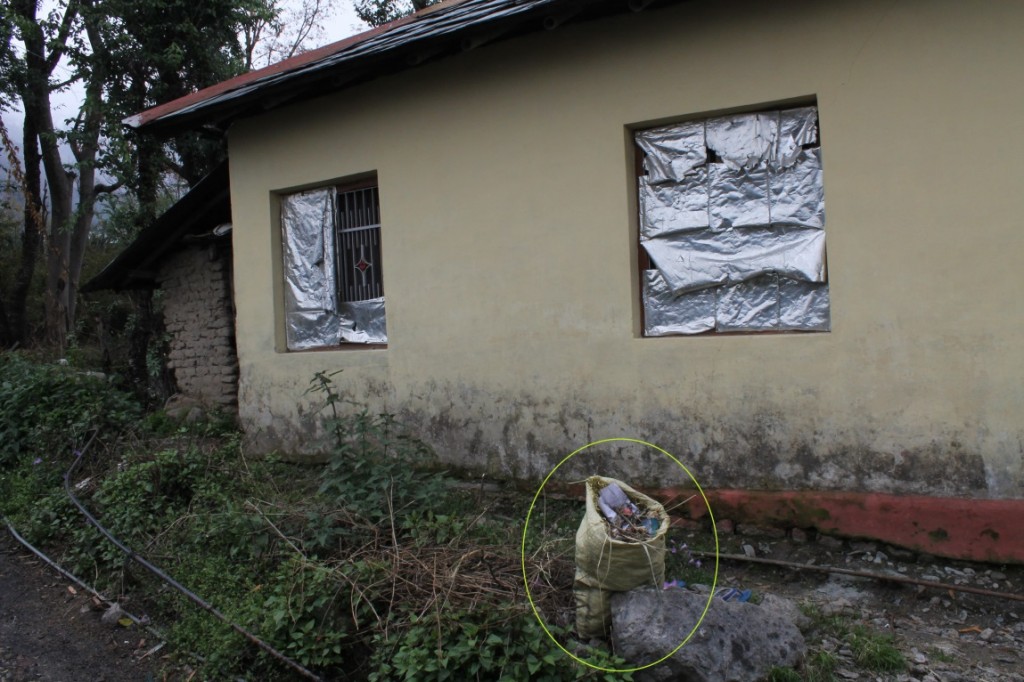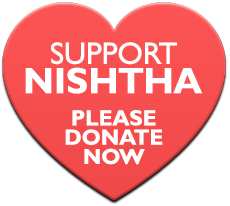by Atreya Shankar
Read Atreya’s blog by clicking here.
It has been one month since I started helping the Nishtha team with its Clean Rakkar Environment Project. This document serves as a report for the month’s progress.
In recent years, Rakkar has been experiencing increasing development. With this development, there has been an influx of higher-end packaged goods from cities. Because there is no proper disposal system for these goods in the village, their packaging often lands up littered around Rakkar- sometimes in beautiful areas like natural rivers and ravines.
Nishtha has for many years been working to solve this problem of litter in Rakkar. The aim of this project is to create a litter-free Rakkar with each household and shop having a reliable waste disposal system.
We started the month off by prioritizing our workload. Through team meetings and discussions, we concluded we could either start off by organizing clean-ups of local dumpsites or we could organize a regular inorganic waste collection system from households and shops. We came to a decision that it would be wiser to first set up a waste collection system from households and shops since that would give the local villagers a reason to stop littering. Once they stop littering, we can then take a next step to clean up already existing dumpsites with the help of the community.
We started our collection system by dividing Rakkar into 4 unique sectors- from north to south, sectors 1 to 4.
Each sector was estimated to have about 30-40 households and shops. We planned to talk to every household and shop in each sector and tell them about our waste collection system. We would tell them to store their dry inorganic waste in a sack or container and we would collect this waste every fortnight. Also, when talking to a house or shop owner, we would note down their names and draw out a map of the local area. This would allow us to develop an exhaustive urban map of Rakkar which would be important for the transfer of knowledge when handing over work to another party who is not acquainted to Rakkar.
This was how we intended to go about the month of February:
| Week | Goal |
| Feb Week 1 | Survey Sector 1 |
| Feb Week 2 | Survey Sector 2 |
| Feb Week 3 | Survey Sector 3 + Waste Collection from Sector 1 |
| Feb Week 4 | Survey Sector 4 + Waste Collection from Sector 2 |
The plan was worked out smoothly until Feb Week 3. Because we had to do two simultaneous activities in Week 3 and Week 4, the workload was quite high and we had to prioritize. We could either carry on with the survey and forego the waste collection or vice versa. We decided it would be wiser to forego the survey of Sector 3 and 4 since we already promised the households and shops of Sector 1 and 2 that we would collect their waste in two weeks’ time. It would not be wise to break promises made to people. So instead in Week 3 and 4 we only did collections from Sector 1 and 2.
Our surveys of Sector 3 and 4 are currently incomplete but we aim to finish them by end of March. Our surveys of Sector 1 and 2, on the other hand, are complete. Here is a screenshot of the village Tillu in Sector 1:
As seen from the diagram, each of the households and shops we spoke to have a number attached to it. Since the households are in Sector 1, the number begins with 1. The numbers have a corresponding name attached to them on a separate excel file. This is for identification purposes. This is the system we are using to develop the map. We hope to develop the map such that it will fit into an A4 sized book. This will be finalized after we complete the survey of Sector 3 and 4.
As for the collection of waste from Sectors 1 and 2, we have gathered some interesting details that are worth sharing.
For one, the means by which we transport the waste is quite interesting. My colleague, Ravi, and I have been riding a scooter around Rakkar carrying a sack and filling it up with the waste from households and shops. Apparently we have made quite a name for ourselves!
Also when we first visited the households and asked them for their waste, many of them simply told us that they threw it away or burnt it.
At first we were quite disappointed, but soon we realized that many households didn’t believe us when we first spoke to them. That’s why they disposed of the rubbish. But after we showed up at their doorstep asking for the waste, many households were convinced by our action and, as seen through a subsequent collection in March, have actually started storing their inorganic waste for us. This I found very heartening.
At this point in time, you may be wondering what we do with the waste once we collect it. As part of the research we did before commencing on this project, we found various scrap dealers and factories that use different kinds of waste for different purposes.
For example, the Public Works Department (PWD) uses thin plastic by mixing it with tar to make roads. These are the different kinds of thin plastic that they take from us:
Scrap dealers in Upper Dharamsala have agreed to take plastic bottles, glass bottles, glass fragments, hard plastic (such as shampoo bottles and bottle caps) and also metal related items (such as aluminum foil). Here is a picture of the waste the scrap dealers take:
This marks our progress for the month of February. As much as we have achieved in this month, we still have a long way to go.
For one, we need to source for agents who recycle paper as our stocks of paper related waste are building up.
Secondly, we also need to work on involving more of the Nishtha staff in this project because currently I and Ravi are the only people managing and running this project. I am a volunteer and it is the full-time staff who will take over from me once I leave and I really want it to go on! This has to become a model village level garbage project – an example for the whole of India!
Lastly, we also need to work on involving the local community in cleaning up the local dumpsites. We are considering speaking to the new law college students in setting up a student-help group for cleaning up Rakkar and also Mauli, a village adjacent to Rakkar.
Stay tuned for more!
Aitrey
